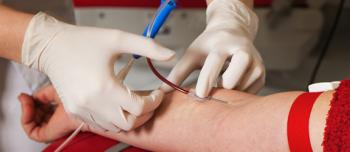Feb 16, 2016 UPDATE:
The US Food and Drug Administration (FDA) announced new blood donor deferral recommendations to reduce the risk of Zika virus transmission. For donors living in areas without active Zika virus transmission, but who may be at risk for infection, the FDA recommends a 4-week deferral from donating blood.
For those living in areas with active Zika virus transmission, the FDA recommends that donors who may be potentially affected to refrain from donating blood. It is also urging blood collection centers to update their educational materials to include Zika virus transmission. Further, the FDA plans to issue guidance on donation of cells, tissues and tissue-based products; prioritize blood screening and diagnostic tools; review methods to reduce mosquito populations; and evaluate the safety and efficacy of new vaccines and therapies that might be developed to prevent and treat Zika virus infection.
Feb 5, 2016: UPDATE:
The Plasma Protein Therapeutics Association (PPTA) has released a statement regarding the zika virus and plasma protein therapies.
The American Association of Blood Banks (AABB) has released a statement regarding the zika virus and blood donations.
The National Hemophilia Foundation (NHF) has been working closely with the Centers for Disease Control and Prevention (CDC), the World Federation of Hemophilia (WFH) and numerous industry and healthcare organizations to monitor the Zika virus outbreak, which has been declared a public health emergency by the World Health Organization (WHO).
The Zika virus is spread from one person to another via the bite of an infected mosquito. Symptoms include fever, rash, joint pain and conjuncitivitis, an inflammation of the eye. The symptoms are usually mild and can last a few days or up to a week. The CDC states that in rare cases, the Zika virus can be spread from a pregnant mother to her newborn at birth if the mother is infected close to the time of her delivery. Cases of transmission have also been reported through blood transfusions and sexual contact.
Because Zika is a flavivirus, which is a lipid-enveloped virus, there is a high probability that it will be successfully inactivated by current viral inactivation techniques (heat, solvent/detergent, nanofiltration) used in the manufacture of plasma-derived medicinal products including plasma-derived FVIII and FIX and vWD concentrates.
Transmission via blood or non-virally inactivated blood components is a potentially greater issue. Transmission is possible through blood donated by infected residents or travellers returning from affected areas, many of whom may be asymptomatic at the time of donation.
Currently, transmission had been identified in at least 21 countries or territories in the Americas, including Puerto Rico. Zika virus infections have been reported in travelers returning to the US. With the recent outbreaks in the Americas, the number of Zika virus disease cases among travelers visiting or returning to the US likely will increase. These imported cases may result in local spread of the virus in some areas of the continental US, meaning these imported cases may result in human-to-mosquito-to-human spread of the virus.
In response the CDC has issued the following healthcare advisory.
NHF is monitoring this situation and will issue updates as more information becomes available. Follow us on Facebook: @NationalHemophiliaFoundation and on Twitter: @NHF_hemophilia for updates.
For more information on the Zika virus:
- Centers for Disease Control and Prevention
- World Health Organization
- US Dept. of Health and Human Services Zika 101
- FDA website.





